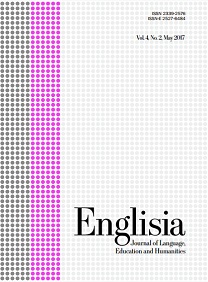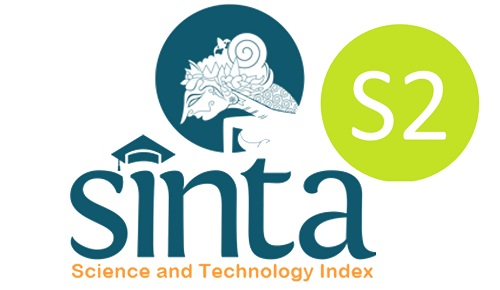Unveiling EFL students’ views on gamified learning experience: A survey study
DOI:
https://doi.org/10.22373/ej.v12i2.28825Keywords:
English learning, gamification, gameful experiencesAbstract
Gamification has gained power in education for its potential to boost student motivation through engaging, game-like experiences. However, the specific dimensions driving its effectiveness in language learning remain underexplored. This study investigates English as a Foreign Language (EFL) students’ perceptions of gamified learning tools (e.g., Classcraft, Kahoot! Quizizz, Duolingo) in enhancing their English acquisition. A cross-sectional survey design was employed, utilizing the GAMEFULQUEST online questionnaire to capture immediate responses from 155 EFL students at a state university in Central Java, Indonesia. Participants, selected via purposive sampling, had experience with gamified learning platforms inside and outside the classroom. Findings revealed high satisfaction across all seven dimensions of the gamified experience, with no significant variations by gender or age. These results highlight the universal appeal of gamification in EFL contexts and provide a foundation for future research.Downloads
References
Almusharraf, N., Aljasser, M., Dalbani, H., & Alsheikh, D. (2023). Gender differences in utilizing a game-based approach within the EFL online classrooms. Heliyon, 9(2). https://doi.org/10.1016/j.heliyon.2023.e13136
Apriani, E., Arsyad, S., Syafryadin, Supardan, D., Gusmuliana, P., & Santiana. (2022). ICT platforms for Indonesian EFL students viewed from gender during the COVID-19 pandemic. Studies in English Language and Education, 9(1), 187-202. https://doi.org/10.24815/siele.v9i1.21089
Armanda, M. L., & Indriani, L. (2023). The effect of using Classcraft on EFL students’ reading comprehension. Metathesis: Journal of English Language, Literature, and Teaching, 7(1), 47–59. https://doi.org/10.31002/metathesis.v7i1.197
Armanda, M. L., & Priyana, J. (2023). Incorporating gamification elements from Classcraft in English instruction: A scoping review. UC Journal: ELT, Linguistics and Literature Journal, 4(2), 95–110. https://doi.org/10.24071/uc.v4i2.7559
Armstrong, M. B., & Landers, R. N. (2017). An evaluation of gamified training: using narrative to improve reactions and learning. Simulation & Gaming, 48(4), 513–538. https://doi.org/10.1177/1046878117703749
Arunsirot, N. (2020). Integration of gamification approach in EFL classroom context. Journal of Education and Innovation, 23(4), 30–45.
Bittner, J. V., & Shipper, J. (2014). Motivational effects and age differences of gamification in product advertising. Journal of Consumer Marketing, 31(5), 391–400. https://doi.org/10.1108/jcm-04-2014-0945
Bittner, J.V., Shipper, J. (2014). Motivational effects and age differences of gamification in product advertising. Journal of Consumer Marketing, 31, 391–400. https://doi.org/10.1108/JCM-04-2014- 0945
Brauner, P., Calero Valdez, A., Schroeder, U., & Ziefle, M. (2013). Increase physical fitness and create health awareness through Exergames and gamification. Lecture Notes in Computer Science, 349–362. https://doi.org/10.1007/978-3-642-39062-3_22
Cairns, P., Cox, A., & Nordin, A. I. (2014). Immersion in Digital Games: Review of Gaming Experience Research. Handbook of Digital Games, 337–361. https://doi.org/10.1002/9781118796443.ch12
Chiang, H.-H. (2020). Kahoot! in an EFL reading class. Journal of Language Teaching and Research, 11(1), 33. https://doi.org/10.17507/jltr.1101.05
Chou, Y. (2015). Actionable gamification: Beyond points, badges, and leaderboards. Fremont, CA: Octalysis Media.
Codish, D., & Ravid, G. (2017). Gender moderation in gamification: Does one size fit all?. Proceedings of the Annual Hawaii International Conference on System Sciences, 2006-2015. https://doi.org/10.24251/hicss.2017.244
De La Cruz, K. M., Gebera, O. W., & Copaja, S. J. (2021). Application of gamification in higher education in the teaching of English as a foreign language. Perspectives and Trends in Education and Technology, 323–341. https://doi.org/10.1007/978-981-16-5063-5_27
Dehghanzadeh, H., Fardanesh, H., Hatami, J., Talaee, E., & Noroozi, O. (2019). Using gamification to support learning English as a Second language: A systematic review. Computer Assisted Language Learning, 34(7), 934–957. https://doi.org/10.1080/09588221.2019.1648298
Deterding, S., Dixon, D., Khaled, R., & Nacke, L. (2011). From game design elements to gamefulness: defining gamification. Proceedings of the 15th International Academic MindTrek Conference, 9-15. https://doi.org/10.1145/2181037.2181040
Eppmann, R., Bekk, M., & Klein, K. (2018). Gameful experience in gamification: Construction and validation of a gameful experience scale [GAMEX]. Journal of Interactive Marketing, 43, 98–115. https://doi.org/10.1016/j.intmar.2018.03.002
Flores, J. F. (2015). Using gamification to enhance second language learning. Digital Education Review, 32-54.
González-González, C. S., Toledo-Delgado, P. A., Muñoz-Cruz, V., & Arnedo-Moreno, J. (2022). Gender and age differences in preferences on game elements and platforms. Sensors, 22(9), 3567. https://doi.org/10.3390/s22093567
Greenberg, B. S., Sherry, J., Lachlan, K., Lucas, K., & Holmstrom, A. (2010). Orientations to video games among gender and age groups. Simulation and Gaming, 41(2), 238–259.
Griffiths, M. D., Davies, M. N. O., & Chappell, D. (2003). Breaking the stereotype: The case of online gaming. CyberPsychology and Behavior, 6(1), 81–91.
Högberg, J., Hamari, J., & Wästlund, E. (2019). Gameful experience questionnaire (GAMEFULQUEST): An instrument for measuring the perceived gamefulness of system use. User Modeling and User-Adapted Interaction, 29(3), 619–660. https://doi.org/10.1007/s11257-019-09223-w
Hou, Y. (2018). Integration of Kahoot! into EFL classroom. Communications in Computer and Information Science, 31–37. https://doi.org/10.1007/978-3-319-92285-0_5
Huotari, K., & Hamari, J. (2016). A definition for gamification: Anchoring gamification in the service marketing literature. Electronic Markets, 27(1), 21–31. https://doi.org/10.1007/s12525-015-0212-z
Huseinović, L. (2023). The effects of gamification on student motivation and achievement in learning English as a foreign language in higher education. MAP Education and Humanities, 4(1), 10–36. https://doi.org/10.53880/2744-2373.2023.4.10
Ismail, M. A.-A., & Mohammad, J. A.-M. (2017). Kahoot: A promising tool for Formative Assessment in Medical Education. Education in Medicine Journal, 9(2), 19–26. https://doi.org/10.21315/eimj2017.9.2.2
Kappen, D.L., Mirza-Babaei, P., & Nacke, L.E. (2017). Gamification through the application of motivational affordances for physical activity technology. CHI PLAY '17: Proceedings of the Annual Symposium on Computer-Human Interaction in Play, 5-18. https://doi.org/10.1145/3116595.3116604
Khan, A., Ahmad, F., & Malik, M. M. (2017). Use of digital game based learning and gamification in secondary school science: The effect on student engagement, learning and gender difference. Education and Information Technology, 22, 2767–2804. https://doi.org/10.1007/s10639-017-9622-1
Kıyançiçek, E. & Uzun, L. (2022). Gamification in English Language Classrooms: The Case of Kahoot!. SEAT Journal (Science, Education, Art and Technology Journal), 6(1), 1-13.
Koivisto, J., &. Hamari, J. (2014). Demographic differences in perceived benefits from gamification. Computers in Human Behavior, 35, 179-188. http://dx.doi.org/10.1016/j.chb.2014.03.007
Korkmaz, S., & Hüseyin, Ö. (2021). Using Kahoot to improve reading comprehension of English as a foreign language learner. International Online Journal of Education and Teaching, 8(2). 1138–1150.
Kriyakova, G., Yordanova, L., & Angelova, N. (2014). Gamification in education. 9th International Balkan Education and Science Conference, 1-5.
Lam, S. L. (2016). Use of gamification in vocabulary learning: A case study in Macau. Symposium Center for English Language Communication (CELC), 90-97.
Landers, R. N. (2014). Developing a theory of gamified learning: linking serious games and gamification of learning. Simulation and Gaming, 45(6), 752–768. https://doi.org/10.1177/1046878114563660
Landers, R. N., Auer, E. M., Collmus, A. B., & Armstrong, M. B. (2018). Gamification science, its history and future: definitions and a research agenda. Simulation and Gaming, 49(3), 315–337. https://doi.org/10.1177 /1046878118774385
Landers, R. N., Bauer, K. N., & Callan, R. C. (2017). Gamification of task performance with leaderboards: a goal setting experiment. Computers in Human Behavior, 71, 508–515. https://doi.org/10.1016/j. chb.2015.08.008
Mahbubah, L., & Anam, S. (2022). Students’ perceptions of the implementation of Kahoot! in English language teaching. Lingua Scientia, 29(1), 23–32. https://doi.org/10.23887/ls.v29i1.35644
Majuri, J., Koivisto, J., & Hamari, J. (2018). Gamification of education and learning: A review of empirical literature. Proceedings of GamiFIN Conference, 11-19.
Oliveira, W., Pastushenko, O., Rodrigues, L., Toda, A., Palomino, P. T., Hamari, J., & Isotani, S. (2021). Does gamification affect flow experience? A systematic literature review. Proceedings of the 5th International GamiFIN Conference, 110–119. https://doi.org/10.48550/arXiv.2106.09942
Özhan, Ş. Ç., & Kocadere, S. A. (2019). The effects of flow, emotional engagement, and motivation on success in a gamified online learning environment. Journal of Educational Computing Research, 57(8), 2006–2031. https://doi.org/10.1177/0735633118823159
Palmquist, A., & Jedel, I. (2021). Influence of gender, age, and frequency of use on users’ attitudes on gamified online learning. Advances in Intelligent Systems and Computing, 177–185. https://doi.org/10.1007/978-3-030-74009-2_23
Parra-González, M.-E., Segura-Robles, A., Moreno-Guerrero, A.-J., & López-Belmonte, J. (2022). Elaboration and validation of the scale to measure the experience on gamification in Education (EGAMEDU). Journal of Technology and Science Education, 12(1), 217. https://doi.org/10.3926/jotse.1505
Permana, P., Permatawati, I., & Khoerudin, E. (2023). Foreign language learning gamification using quizizz: A systematic review based on students’ perception. Eralingua: Jurnal Pendidikan Bahasa Asing dan Sastra, 7(2), 233. https://doi.org/10.26858/eralingua.v7i2.23969
Polo-Peña, A. I., Frías-Jamilena, D. M., & Fernández-Ruano, M. L. (2020). Influence of gamification on perceived self-efficacy: Gender and age moderator effect. International Journal of Sports Marketing and Sponsorship, 22(3), 453–476. https://doi.org/10.1108/ijsms-02-2020-0020
Prensky, M. (2001). Digital native and digital immigrant part 1. On the Horizon, 9(5), 1–6.
Sailer, M., & Homner, L. (2019). The gamification of learning: A meta-analysis. Educational Psychology Review, 32(1), 77–112. https://doi.org/10.1007/s10648-019-09498-w
Seaborn, K., & Fels, D. I. (2015). Gamification in theory and action: A survey. International Journal of Human Computer Studies, 74, 14–31. https://doi.org/10.1016/j.ijhcs.2014.09.006
Sillaots, M. (2014). Achieving Flow through Gamification: A study on Re-designing Research Methods Courses. European Conference on Games Based Learning, 2, 538.
Sillaots, M., Jesmin, T., Fiadotau, M., & Khulbe, M. (2020). Gamifying classroom presentations: Evaluating the effects on engagement across demographic factors. European Conference on Games-Based Learning, 537-XIX. DOI:10.34190/GBL.20.105
Tao, Y., & Zou, B. (2021). Students’ perceptions of the use of Kahoot! in English as a foreign language classroom learning context. Computer Assisted Language Learning, 36(8), 1668–1687. https://doi.org/10.1080/09588221.2021.2011323
Urh, M., Vukovic, G., Jereb, E., & Pintar, R. (2015). The model for introduction of gamification into e-learning in higher education. Procedia - Social and Behavioral Sciences, 197, 388–397. https://doi.org/10.1016/j.sbspro.2015.07.154
Vargo, S. L., & Lusch, R. F. (2004). Evolving to a new dominant logic for marketing. Journal of Marketing, 68(1), 1–17. https://doi.org/10.1509/jmkg.68.1.1.24036
Wang, C.-M., Hong, J.-C., Ye, J.-H., Ye, J.-N., & Watthanapas, N. (2021). Analysis of gender differences in digital game-based language learning for Thai language learning affection, cognition and progress performance. International Journal of Social Science and Humanity, 119–126. https://doi.org/10.18178/ijssh.2021.v11.1051
Werbach, K. (2014). (Re)defining gamification: A process approach. Lecture Notes in Computer Science, 266–272. https://doi.org/10.1007/978-3-319-07127-5_23
Williams, D., Yee, N., & Caplan, S. E. (2008). Who plays, how much, and why? Debunking the stereotypical gamer profile. Journal of Computer-Mediated Communication, 13(4), 993–1018.
Witari, I., Anwar, K., & Arifani, Y. (2021). The effect of Classcraft on enhancing grammar performance of Adult Learners. Proceedings of the 1st UMGESHIC International Seminar on Health, Social Science and Humanities (UMGESHIC-ISHSSH), 585, 108-121. https://doi.org/10.2991/assehr.k.211020.019
Wulantari, N. P., Rachman, A., Nurmalia Sari, M., Jola Uktolseja, L., & Rofi’i, A. (2023). The Role Of Gamification In English Language Teaching: A Literature Review. Journal on Education, 6(1), 2847-2856. https://doi.org/10.31004/joe.v6i1.3328
Downloads
Published
Issue
Section
License
Copyright (c) 2025 Muhamad Laudy Armanda, Joko Priyana

This work is licensed under a Creative Commons Attribution 4.0 International License.
Proposed Policy for Journals That Offer Open Access
Authors who publish with Englisia journal agree to the following terms:
- Authors retain copyright and grant the journal right of first publication with the work simultaneously licensed under a Creative Commons Attribution License that allows others to share the work with an acknowledgement of the work's authorship and initial publication in this journal.
- Authors are able to enter into separate, additional contractual arrangements for the non-exclusive distribution of the journal's published version of the work (e.g., post it to an institutional repository or publish it in a book), with an acknowledgement of its initial publication in this journal.
- Authors are permitted and encouraged to post their work online (e.g., in institutional repositories or on their website) prior to and during the submission process, as it can lead to productive exchanges, as well as earlier and greater citation of published work (See The Effect of Open Access).









